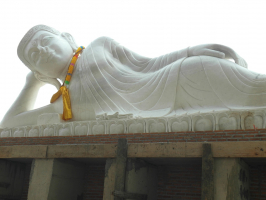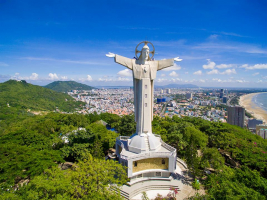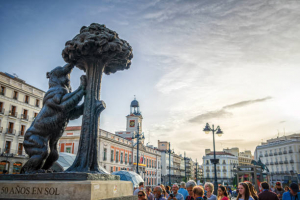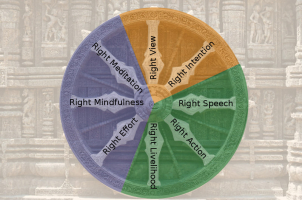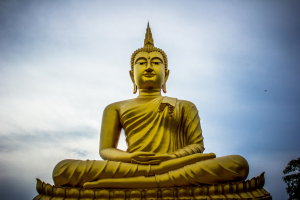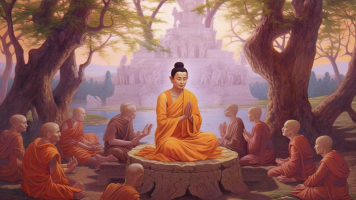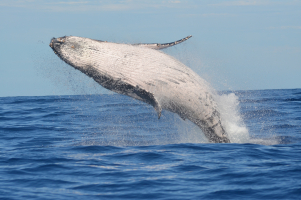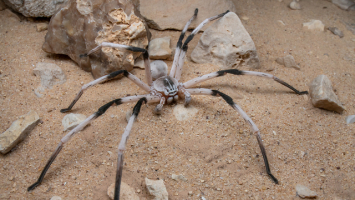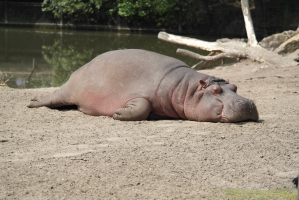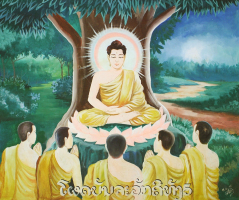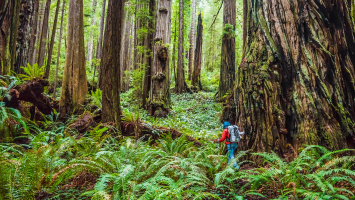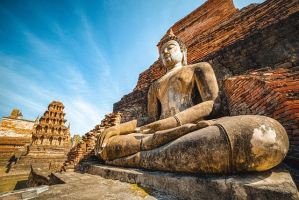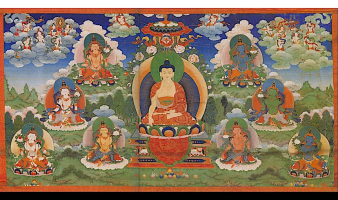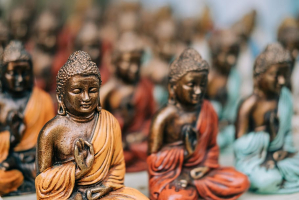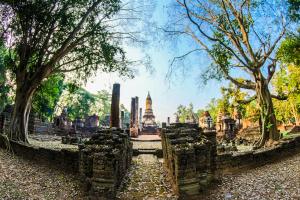Top 10 Most Awsome Giant Buddha Statues In The World
Buddhism is practiced by hundreds of millions of people worldwide, therefore it should come as no surprise that Buddha statues can be seen all over Asia, where ... read more...the majority of Buddhists reside, and are among the biggest and most magnificent symbols of any religion. From intricate rock reliefs to vividly painted sculptures, these effigies will take your breath away.
-
The Maha Bodhi Ta Htaung, a Burmese monastery noted for its two huge Buddha images, is located in the hills south of Monywa. Images on top of a hill dominate the landscape and may be seen from a long distance. Thousands of seated Buddha figures under Bodhi trees dot the huge grounds at the foot of the hill.
The Monywa reclining Buddha is one of the world's largest, measuring 90 meters long and 20 meters high. The picture depicts the Buddha on the eve of death and entering Nirvana, clad in a golden robe and lying on a golden pedestal. The picture, which was completed in 1991, is hollow; visitors can walk inside the interior, which houses 9,000 miniature Buddha images.
The Laykyun Setkyar Buddha, a standing image of the Buddha draped in a golden robe, towers above the terrain. Two enormous white Chinthes, mythological monsters resembling lions, guard the stairs leading to the platform where the image is located. The standing statue is 116 meters (129 meters with the pedestal) tall and has thirty-one floors, which correspond to the Buddhist literature's 31 planes of existence or 31 Realms of Life Cycle. It was finished in 2008. The picture is hollow, and visitors can climb almost to the top. On the ground floor, there are multiple Buddha images in various mudras.
Murals show images from Buddhist hell and the penalties meted out to those who remain there on the image's interior walls. Some graphic scenes depict the consequences of various types of transgression. Visitors can see the surrounding countryside and the mountains in the background from the top of the image.
Location: Khatakan Taung, near Monywa, Myanmar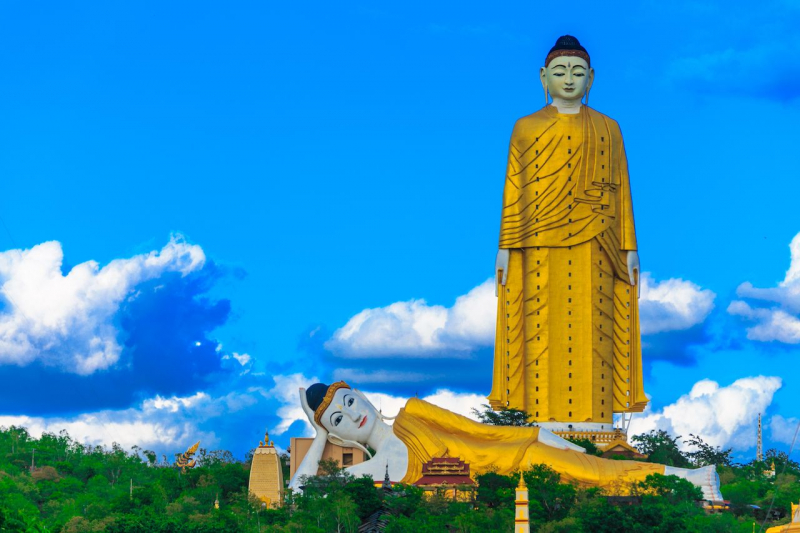
Anut21ng Photo/Shutterstock 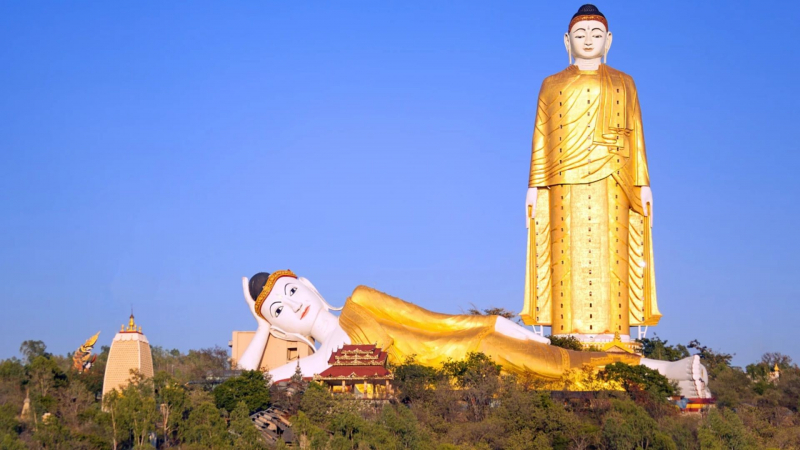
The Great Buddhas of Monywa - Dreamstime -
The gigantic statue of Lord Buddha begins to unveil itself as you progressively climb the hill in Kuenselphodrang Nature Park. It's a scene that takes your breath away at first glance. The statue of Lord Buddha, seated against the backdrop of a mountain, casts a benevolent gaze on the surroundings. From afar, all you can see is one massive statue. However, there is a surprise in store for you, and you won't know what it is until you get closer.
The Buddha Dordenma Statue is one of the most stunning views in Bhutan. It stands over 169 feet tall and has 1,25,000 small Buddhas in its bronze chest. These are 8 to 12 inches tall. When you think about it, Thimphu, Bhutan's capital city, has a population of roughly 100,000 people, which is less than the number of Buddhas on this edifice!
These hundreds of miniature Buddhas, like the giant Buddha, are plated and made of bronze, which is why the statue cost about $100 million to build when it was built in 2015 to commemorate the 60th birthday of Jigme Singye Wangchuck, Bhutan's fourth king.Everyone is taken aback by the massive statue of Lord Buddha. It is 51.5 meters tall, making it one of the tallest Buddha sculptures in the world. The throne he is sitting on is a big meditation chamber.
This statue, like so many other religious constructions in Bhutan, is linked to two prophecies. The first was made by Yogi Sonam Sangpo, who stated that "a statue would be created in this region to impart blessings, peace, and happiness on the entire world." The second prophecy was given by Guru Padmasambhava in the eighth century (Guru Padmasambhava is usually regarded as the second Buddha by Tibetan Buddhists).Location: Kuenselphodrang, Thimphu, Bhutan
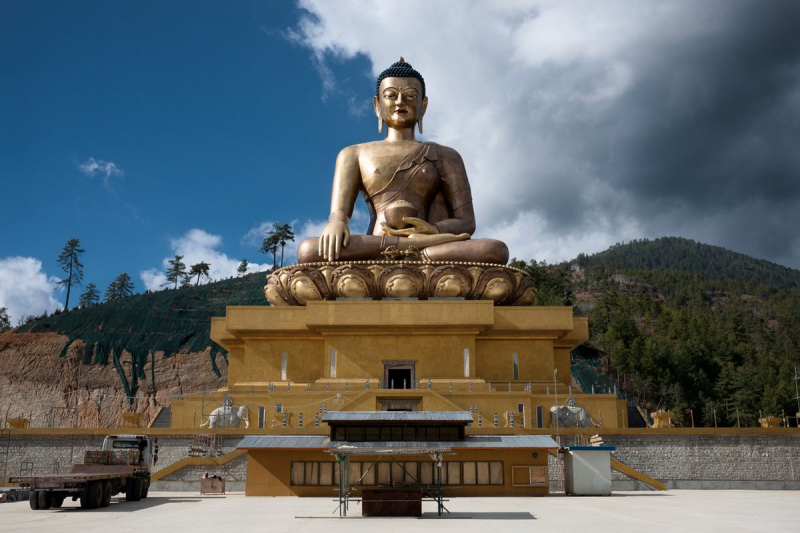
atlasobscura.com 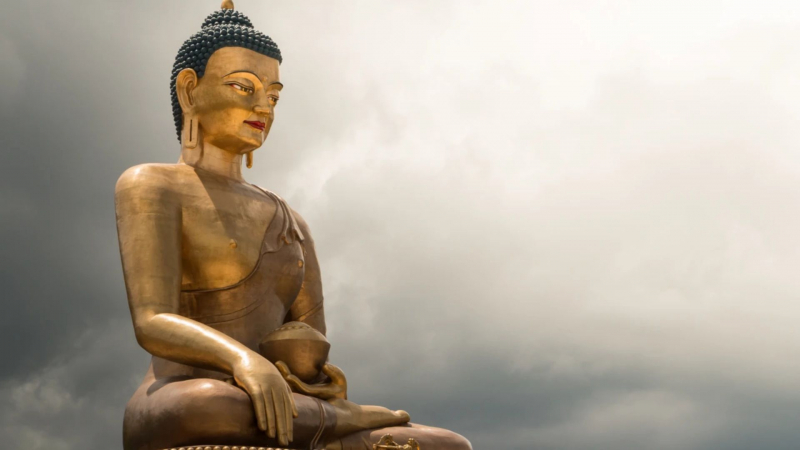
Buddha Dordenma, Bhutan - Dreamstime -
The Leshan Giant Buddha is a sitting statue of Maitreya (a Bodhisattva who is frequently shown as a very obese monk with a large smile on his face and his naked breast and paunch exposed to view). The Buddha is located in Sichuan Province, east of Leshan City, at the confluence of three rivers: the Min River, the Qingyi River, and the Dadu River. The monument became the most well-known scenic location in the city. UNESCO added the Buddha's location to the list of World Heritage sites in December 1996. Begun in 713 during the Tang Dynasty and completed in 803, the statue took more than 90 years to carve. Thousands of workers had contributed their time and expertise to the project throughout the years. The Giant Buddha, the world's largest carved stone Buddha, appears in poetry, song, and narrative.
The Buddha faces the river and has a symmetrical posture and expression that has been masterfully caught in its sad quiet. It is 71 meters (about 233 feet) tall and has 8.3 meters (about 27 feet) long fingers. The 9-meter-wide (about 30-foot) instep can accommodate 100 people, while the 24-meter-wide (about 79-foot) shoulder can accommodate a basketball court.
The Buddha's allure stems not just from its grandeur but also from its architectural brilliance. The Buddha's coiled hair has 1,021 buns. These have been expertly implanted in the brain. The workmanship is so impressive that the 1,021 buns appear to be a part of the entire. The drainage system is another architectural marvel. This system is comprised of a number of hidden gutters and channels located on the head and arms, behind the ears, and within the clothing. This arrangement, which serves to shift precipitation and keep the interior area dry, is critical to the Buddha's safety. The big set of ears is seven meters (approximately 23 feet) long and painted with mud on the surface. It was difficult for craftsmen thousands of years ago to attach these to the stone head.
Location: No. 2435, Mid Section of Lingyun Rd., Leshan City, Sichuan Province
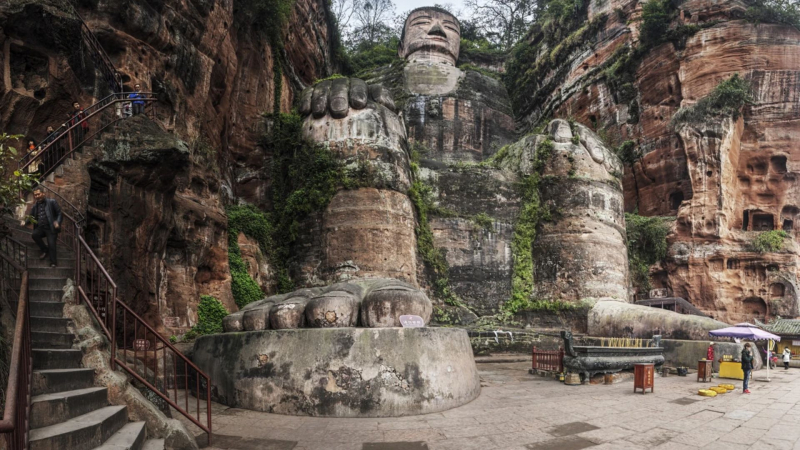
The Giant Buddha of Leshan - Dreamstime 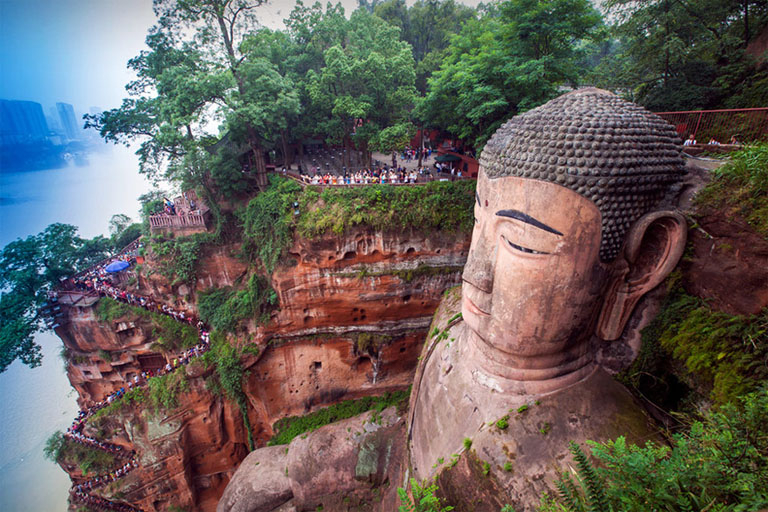
The plank road that leads up and down Leshan Giant Buddha.- China Discovery -
A popular tourist attraction is located on the left bank of the Gaoping River, northeast of Dashu Township in Kaohsiung City. Master Hsing Yun and his students created the Buddhist center of South Taiwan here. The Fo Guan Shan Monastery is Taiwan's largest Buddhist monastery. It is the headquarters of a new religious movement that advocates a new form of Humanistic Buddhism and was created in 1967.
The temple architecture is distinctive, and the most notable landmark in the region may be located on the southeastern side of Fo Guang Mountain (Guang Shan) Monastery: a 120-meter-tall golden statue of Buddha Amitabha. The main area is encircled by 480 standing Buddhas, and the surrounding environment is breathtaking. The primary constructions are four temples, notably the Daxiongbao, Dabei, Dazhi, and Dashu shrines. The Daxiongbao shrine is the largest and most majestic of the four sanctuaries. Sakyamuni is the principal god of worship here, with sculptures of Amitabha on the left and right sides. The shrine is surrounded by around 10,000 Guanyin figurines. Buddha sculptures and light lamps lay in the 14,800 holes in the four sanctuaries' walls. The park contains almost a thousand Buddha statues, both huge and small.
Location: No. 153, Xingtian Rd., Xingtian Vil., Dashu Dist., Kaohsiung City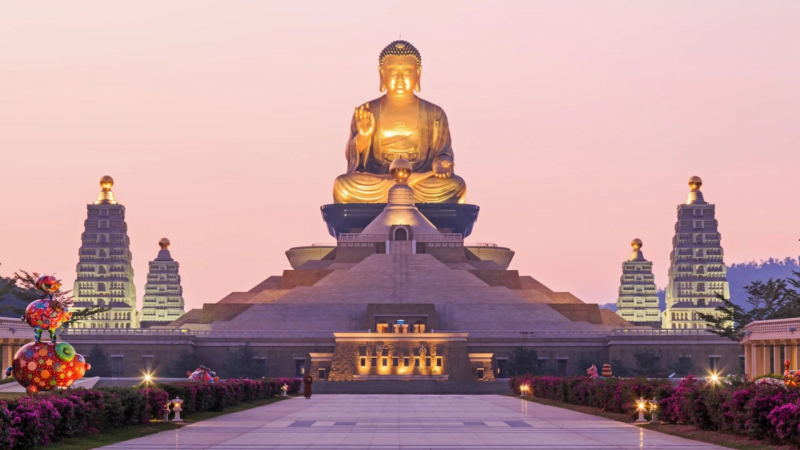
Sunset at Fo Guang Shan - Dreamstime 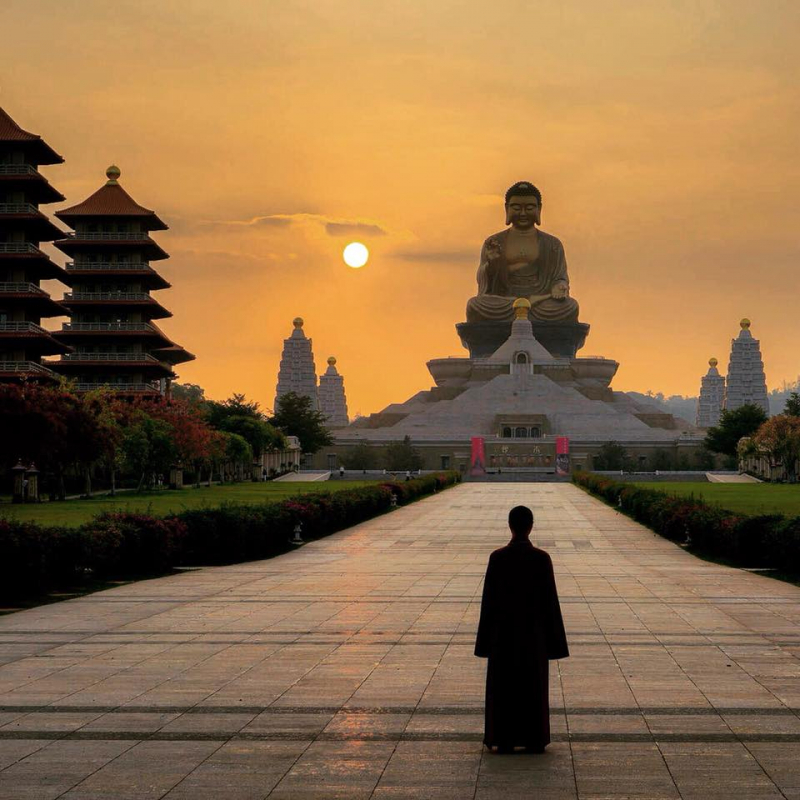
Ira Block -
Ling Shan Great Buddha, also known as Lingshan Buddha, is a symbol of Wuxi City, located on the northern shore of Taihu Lake. This holy region - Lingshan Grand Buddha Scenic Area - is named after Xuanzang, a famous Chinese Buddhist monk during the early Tang Dynasty (A.D. 618-907). The bronze Shakyamuni Buddha in Lingshan, built in 1997, stands magnificently at 88 meters tall, with the body of the Buddha measuring 79 meters and the lotus flower pedestal at 9 meters. This enormous Buddha, embraced by three hills and facing Taihu Lake, is friendly and smiling, monitoring all living things and safeguarding his people.
Zhao Puchu, the previous leader of the Buddhist Association of China, oversaw the construction of the Lingshan Grand Buddha. His inspirational concept of "Five Great Buddhas in Five Orientations of China" had a significant impact on the development of Chinese Buddhism. Wuxi Lingshan Grand Buddha may now be found in the east of China, Hong Kong Tian Tan Buddha in the south, Leshan Giant Buddha in the west, Yungang Grand Buddha in the north, and Longmen Grand Buddha in the center of China. Lingshan Grand Buddha, the world's highest bronze Shakyamuni Buddha in the open air, is actually 17 meters taller than Leshan Giant Buddha in Sichuan Province.
Location: Mashan Lingshan Road, Binhu District, Wuxi City
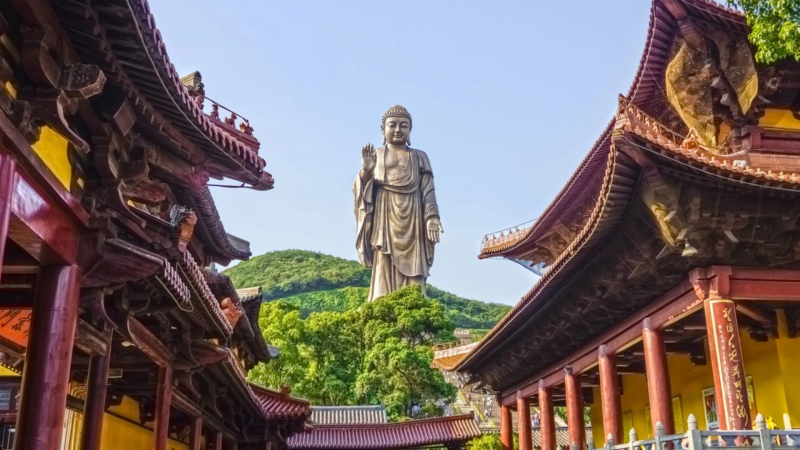
Looking towards the Great Buddha, Ling Shan - Dreamstime 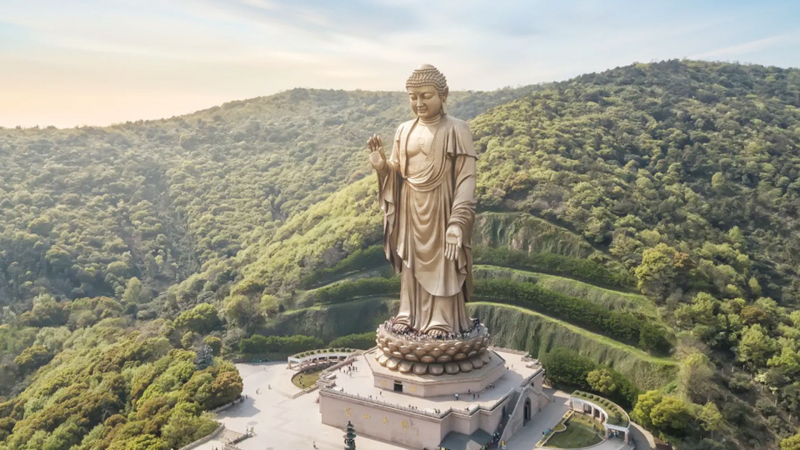
chinadiscovery.com -
The bronzed Great Buddha of Kamakura, also known as the Kamakura Daibutsu, comes from the 13th century and is Japan's second tallest bronze Buddha. The monument is a well-known landmark and one of the most popular tourist attractions in the Kanto region.
The statue is 11.3 meters tall and 121 tons in weight. It is a bronze statue of Amida Buddha that is just slightly less in height than Todaiji's Great Buddha in Nara. The Daibutsu, like the Nara statue, was initially housed inside a temple building after its casting in the 13th century. However, in the 14th and 15th centuries, typhoons, tsunamis, and earthquakes frequently wrecked the hall. So, in 1498, the Amida's caretakers succumbed to the inevitable and abandoned the monument to the elements. It has stood firm ever since, the venerable icon of Kamakura.
The Kamakura Daibutsu is located on the grounds of Kotokuin, a Jodo Sect of Buddhism temple. The Jodo is dedicated to the liberation of all beings, which means that the Great Buddha is available to everyone: saints and sinners, rich and poor, young and old. A Buddha of equal possibilities, bringing all to the Pure Land.
Standing inside the Great Buddha itself, listening to the quiet world outside, is the highlight of any visit. A pair of 1.8-meter-long warazori straw sandals hangs to the right of the Buddha. Children from the same group weave them every three years with the expectation that the Buddha will use them to cross the length and breadth of Japan.
Niomon gate, the beautifully colored entryway where the temple's two protective Deva Kings live, is another point of curiosity. Kangetsudo Hall, located behind the Buddha, was originally part of the imperial palace in 15th-century Seoul before being relocated to Tokyo and finally to Kamakura. It houses an image of Kannon Bosatsu, the Goddess of Mercy, from the Edo era (1603-1867).
Location: 4-2-28, Hase, Kamakura, Japan
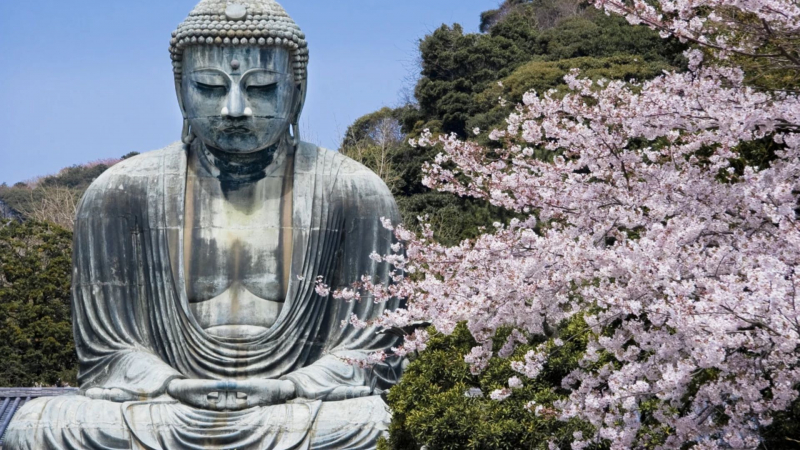
Daibutsu of Kamakura - Dreamstime 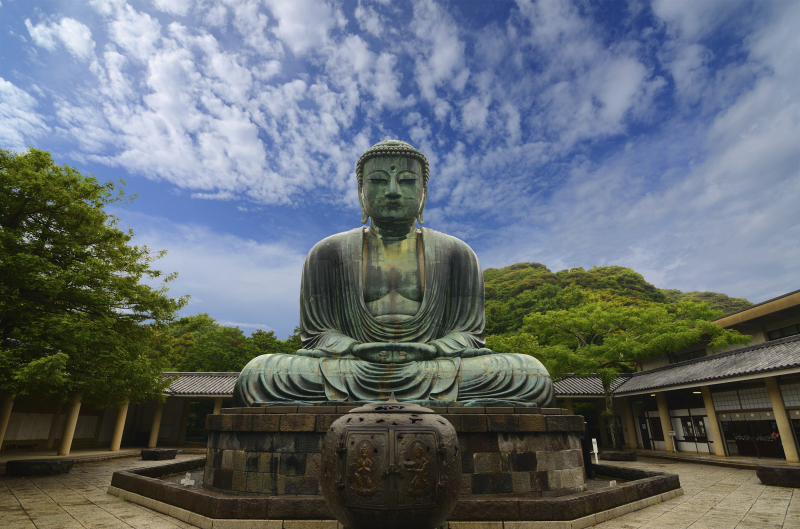
GaijinPot Travel -
Gal Vihara, part of Parakramabahu I's northern monastery, is a collection of exquisite Buddha statues that represents the pinnacle of Sinhalese rock carving. Many visitors may recognize the gigantic reclining Buddha statue, which has adorned the cover of countless travel books to the country, but the complex really houses four unique Buddha statues, all cut from one large slab of granite. At one time, each was housed in its own enclosure.
The standing Buddha stands 7 meters tall and is considered the best in the group. Because of the odd crossed arms and sorrowful facial expression, it was thought to be an image of the Buddha's disciple Ananda, grieving for his master's departure for nirvana, as the reclining image is next to it. The fact that it had its own enclosure, as well as the discovery of other images with the same arm posture, disproved this notion, and it is now recognized that all of the images are of the Buddha.
The 14-meter-long reclining Buddha is shown entering parinirvana (nirvana after death) The attention to detail is astounding, particularly the tiny depression in the cushion under the head and the lotus emblems on the pillow end, and the soles of Buddha's feet.
The seated Buddha on the far left is surrounded by four other Buddhas in the Torana (ornamental entryway), implying that this is a representation of the Five Dhyani Buddhas. The sculptures make excellent use of the rock's natural marbling.
The fourth Buddha in the little rock hollow is smaller and of worse quality than the others.Location: X283+CXG, Nissankamallapura, Sri Lanka
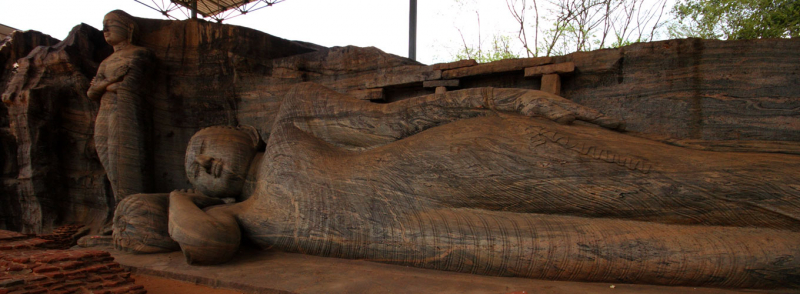
themiracleisland.com 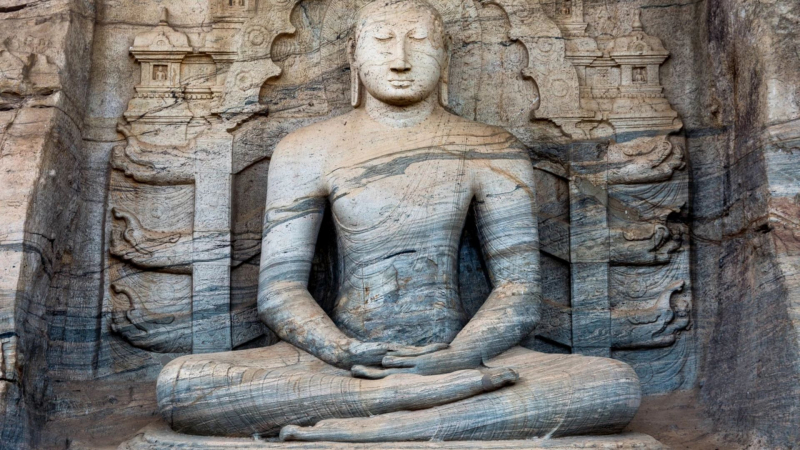
Gal Viharaya - Dreamstime -
The Laughing Buddha statue, called Bố Đại in Vietnamese, is housed within Vinh Trang Pagoda. The Laughing Buddha represents happiness and good fortune.
Bo Dai, or the Laughing Buddha, is popular in Vietnamese homes and among youngsters. He's famed for his wide grin and even bigger belly, but it's rare to see this Buddha incarnation in person.
When you do, the effect can be unsettling. To all intents and purposes, My Tho's Vinh Trang Pagoda is a classic Buddhist temple: tranquil, silent, and worshipful. But that is broken when you face the colossal Bo Dai. You can't help but laugh, which is presumably the point.
This is one of Asia's largest Buddha statues.
Location: 996F+RCM, My An Village, My Tho City, Tien Giang
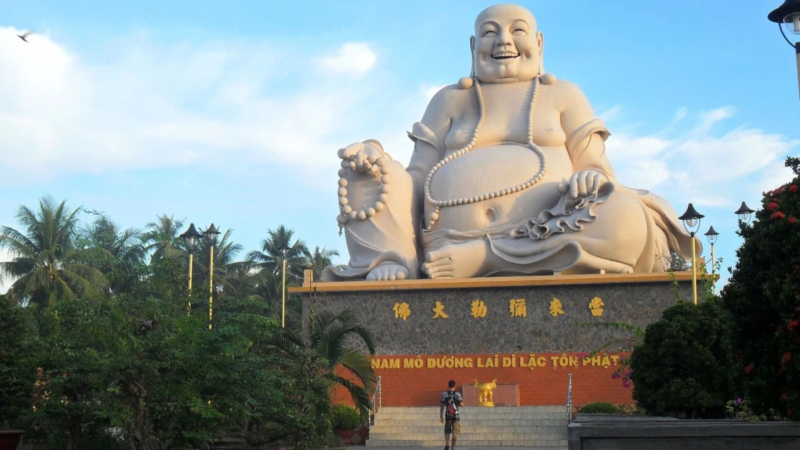
Statue of Bo Dai, Vinh Trang Pagoda - Creative Commons: Milei.vencel 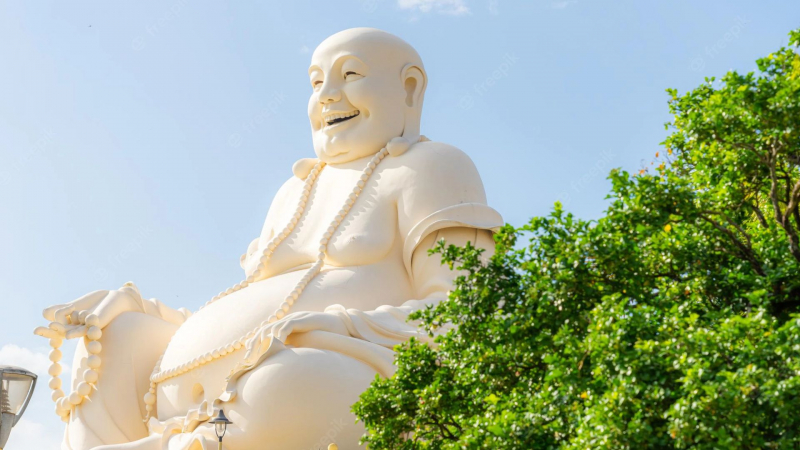
Freepik -
Wat Pho, also known as Wat Phra Chetuphon, is located directly behind the Temple of the Emerald Buddha and is a must-see for any first-time tourist to Bangkok. It is one of the city's greatest temple complexes and is famous for its 46-meter-long gold-leaf-covered reclining Buddha.
The Reclining Buddha is the main attraction for most visitors to Wat Pho. The dimensions are impressive: 15 meters tall, 46 meters long, and so huge that it feels crammed into the structure. The Buddha's feet are 5 meters long and finely embellished with mother-of-pearl depictions of the Buddha's auspicious laksanas (characteristics). The number 108 is significant because it refers to the 108 virtuous activities and symbols that helped Buddha achieve perfection.
You must remove your shoes to enter, and if you want some good luck, you should buy a bowl of coins at the entrance of the hall to drop in the 108 bronze bowls that line the length of the walls. Dropping little pennies in produces a beautiful ringing sound, and even if your wishes don't come true, the money helps the monks restore and preserve Wat Pho. Because this is a sacred figure, all visitors must dress appropriately (no exposed shoulders or skin above the knee).
Location: Maharat Road, Phra Nakhon, Bangkok 10200, Thailand
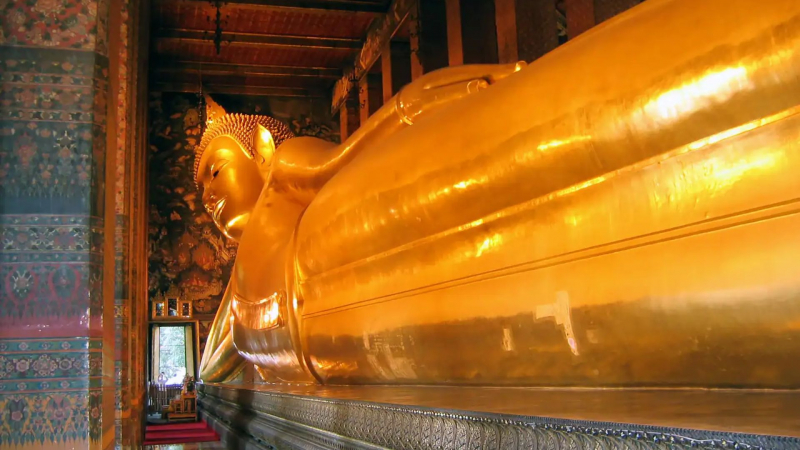
hotels.com 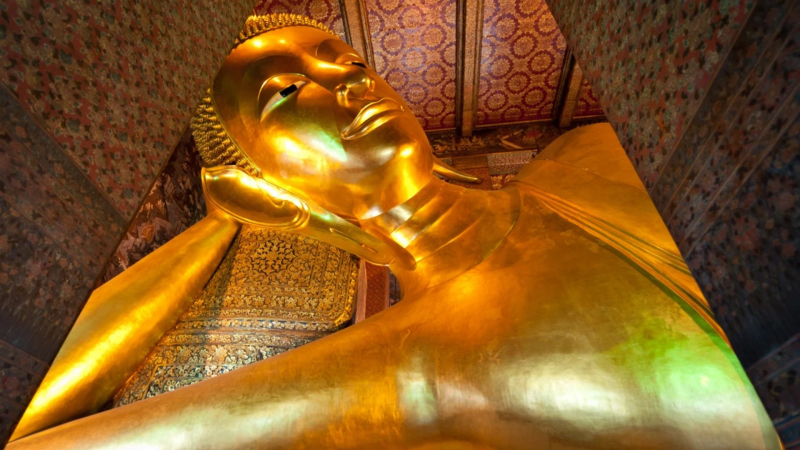
The reclining Buddha of Wat Pho - Dreamstime -
The Big Buddha on Lantau Island is the world's largest outdoor sitting Buddha statue. This magnificent statue stands atop Mount Muk Yue's peak. Po Lin Monastery took 12 years to plan and build this bronze Buddha monument that represents Hong Kong's stability, China's prosperity, and world peace.
The Big Buddha Statue has become a famous icon in Hong Kong, drawing both local and international Buddhists and visitors. It is not only an exceptional work endeavor, but also a significant piece of Buddhist sculptural art in recent history. It is a valuable human legacy.
The statue's design was inspired by the Buddha's 32 laksanas, or "physical marks," as mentioned in the sutras. For its fullness and tranquil beauty, the face was modeled after Buddha Vairocana of the Longmen Caves. The gentle and smooth flowing lines of the Buddha Sakyamuni figure in Cave 360 at the Dunhuang Grottoes inspired the clothing and headgear. The statue was thus a confluence of the Sui and Tang Dynasties' sculptural art qualities when Buddhism was at its peak, skilfully mastered and conceptualized by the artist to mold the flawless design of the Buddha statue that we see today. Ms Hou Jinhui of the Guangzhou Institute of Fine Arts created the statue's plaster model. She began working in April 1982. The 1:5 scale plaster model was completed in February 1984, after the draft was revisited eight times following discussions and conversations with the artist responsible for the statue's conceptual design.
In 2000, the Big Buddha Statue was named the fourth of Hong Kong's ten engineering wonders. The top three were all public works projects, with the Lantau Link coming in first, the Hong Kong International Airport Passenger Terminal coming in second, and the Hong Kong Convention & Exhibition Centre Extension coming in third. The Big Buddha Statue was the first of the private sector initiatives.
The Big Buddha Statue represents the climax of Buddhist sculptural art from the past and now. It combines traditional bronze art with current science and technology, encapsulating the harmonious resonance of Buddhist spirit and modern civilization - a solemn embodiment of humanity's unrelenting search of moral happiness and peace on Earth.Location: Ngong Ping Rd, Lantau Island
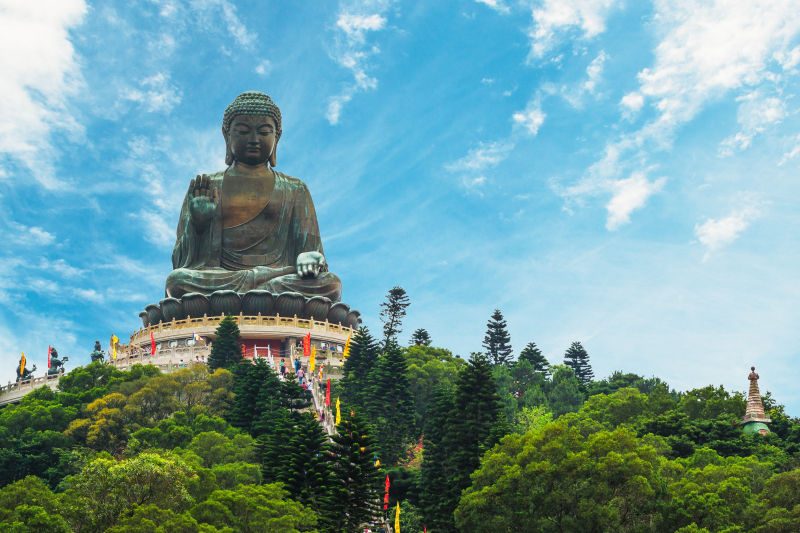
Big Buddha / Tian Tan Buddha - Hong Kong - Arrivalguides.com Topvirtualtours Com












